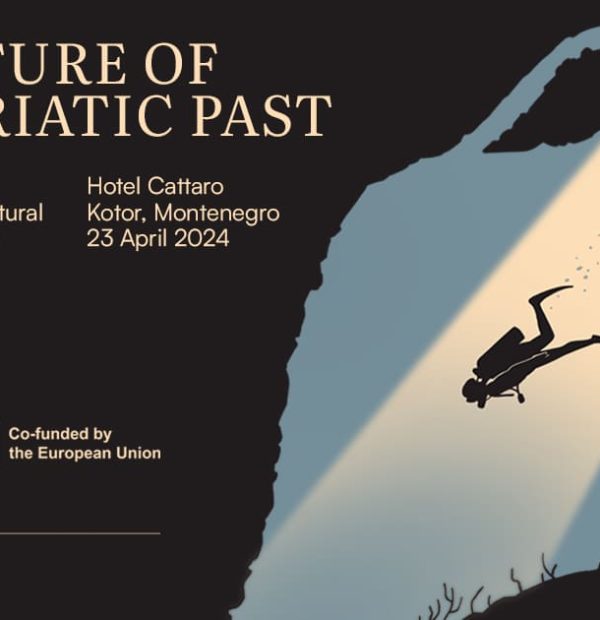Thursday, 16 May 2024
Menu

According to Swedish law, any wreck older than 100 years is automatically protected. However, this does not exclude tourist diving. Relatively small depth and proximity to the shore may cause that it will soon be one of the most popular diving sites in Sweden. However, due to the possibility of divers destroying the site, archaeologists are planning to ban diving there soon.
Such a good state of preservation of the wreck generates both research problems and helps in the identification of the vessel. Usually archaeologists deal with the bottom part of the ship and it is the structural details, such as the sealing, the joints between the staves or the skeleton itself, which tell the origin and dating of the vessel. In this case, however, the hull is almost completely preserved and to try to get to this information would involve the destruction of the monument.
Another problem was the 50m depth of the vessel. The long stay at this depth, which involves a thorough documentation of the wreck, requires appropriate equipment and training. Fortunately, the divers who discovered the wreck decided to cooperate with archaeologists and it was they who made the documentation of the vessel. The dives took place on reabreathers. Visibility varied from 1.5 to 4 m, so accurate documentation would have required a lot of money. The team therefore opted for a general documentation of the site.
The main objective of the survey was to obtain an overview of the wreck and to inventory loose artefacts that could easily be taken from the site in the future. Before starting the measurements, the author of the research created several sketches based on photographs and films taken by divers, and collected comparative material. These sketches then served as a “primer” for the collected measurements and inventory. The combination of these sketches and measurements produced a plan of the vessel.
The lion rests on a keel on the muddy bottom. It looks as if someone has “parked” the ship there, rather than the site of a maritime disaster. Such an arrangement of the vessel, while perfectly preserved, is extremely rare. Probably the hull sank into the silt about 1.5 metres. Two anchors rest on the bottom near the bow, while the third one hangs ready to be dropped at any moment. This is probably the original number of anchors the ship had. There is still an anchor windlass on the bow deck. The ship measures 22 metres between bow and stern. The hull is reinforced with two longitudinal beams at the height of the waterline. The bow deck ends exactly where the anchor windlass is placed. The aft deck ends with two pumps, one of which is destroyed. The bezan mast is leaning heavily towards the deck. The grotmast, foresail and bowsprit are still in place.
The vessel is submerged in silt, so it is difficult to examine its interior. However, the layout of cabins in 17th century Dutch ships was very similar and conclusions can be drawn on the basis of analogy. The captain’s cabin was located under the stern deck. It was the only room on the ship which had windows. Unfortunately, the window panes are missing and the room itself is filled with sediment. In the floor of the room there is a 14 centimetre hole, which researchers interpret as a toilet. Similarly, at the bow there was a small room called the gunpowder cabin. If the ship was armed, gunpowder was stored here. The crew quarters were located in the midship area. Judging by its size the crew of the Lion could count from 6 to 10 people.
In the 17th century the equipment and cargo of ships was very valuable. The skippers therefore went to great lengths to extract these goods. For this they used diving bells and apnea divers. On the wrecks lying at shallow depths you can see the traces of the divers’ activity from more than 300 years ago. Thanks to the fact that the Lion lies at a depth of 50 metres, it has not succumbed to attempts to extract the equipment.
The marks of the collision are very clear. There is a broken bowsprit and a foresail mast that lies on the deck. The lower parts of the masts are still in place. It is not known whether the ship hit the rocks or perhaps another ship. It is also unsolved whether they sank at the point of collision or while sailing to the repair site. No human remains were observed, so it can be assumed that the entire crew managed to abandon the sinking vessel.
The Lion had 3 masts of which the foresail and grotmast bore the sail rigging. All the masts are broken and their parts lie on the deck or outside the wreck. The most damaged is the bezan mast, which was torn out of its socket. When the ship was still sailing it carried a Latin sail.
The most spectacular and spectacular on the wreck are the sculptures. One part of the ship is decorated with a sculpture of a soldier’s head. There is also a sculpture of a lion, which gave the wreck its nickname. Loosely outside the wreck are wooden ornaments that decorated the stern superstructure. Probably in the illiterate seafaring community of the 17th century the carvings could have symbolised the name of the ship.
This wreck is a relic of trade between the Netherlands and Sweden. In the 17th century the economic situation of the two countries was very similar. Another similarity was Protestantism, which defined one enemy: the Catholic countries. Both countries were devastated by wars. In 1614, a non-aggression agreement was signed between the two countries. This agreement applied during the Kakmar War (1611-1613) in which the copper trade with the Netherlands sustained the economy of Sweden, which needed money for the war.
Fluits were the most common ships in the 17th century. They could be called the “workhorses” of the trade at that time. A great advantage of these ships was the fact that they could carry a lot of cargo with a small crew. Their construction was standardised, but no plans of these ships have survived because they probably never existed. According to researchers, despite the standardisation of dimensions and appearance, these vessels were still built “by eye”.
The “Lion Wreck” is a remnant of this type of maritime activity and, thanks to more detailed research, will allow us to get closer to life at sea in the 17th century and the meanders of trade at the time. It may also be possible to solve the mystery of the sinking and the name of this beautiful vessel lying in the murky waters of the Baltic.
The research was conducted in cooperation with divers from Deep Sea Productions, known for finding such wrecks as the Mars and Svartet. The archaeologists plan to return to the site soon together with the mentioned divers to further research this interesting wreck.
Source: podwodna.net
The text is based on:
Eriksson N. 2012 The Lion Wreck: a survey of a 17th-century Dutch merchant ship-an interim report [in:] International Journal of Nautical Archaeology 41 issue 1









Welcome to DIVERS24.COM, your daily source of scuba news, freediving, scuba diving information, and equipment reviews. Our comprehensive coverage of the dive industry from A to Z provides you with all the latest scuba news, training updates, underwater photography tips, and everything else related to scuba diving. Whether you’re a beginner or an experienced diver looking for more knowledge about scuba gear or techniques – we’ve got it covered! With our in-depth articles written by experienced divers who have been there and done that, you are sure to find exactly what you need here at Divers24.com. Dive into scuba news today!
Underwater Media Sp. z o.o.
Szafarnia 11/F8,
80-755 Gdansk, Poland
Welcome to DIVERS24.COM, your daily source of scuba news, freediving, and scuba diving information. Sign in for a weekly news update and discount coupons for dive gear and apparel.
@2023 - underwatermedia.pl. All Right Reserved. Designed and Developed by Tworzenie stron internetowych Gdansk

The Divers24 portal is currently the largest online medium treating diving in Poland. Since 2010 we have been providing interesting and important information from Poland and around the world on all forms of diving and related activities.
Contact us: info@divers24.com